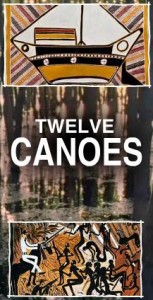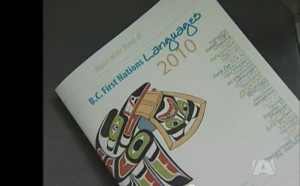Native Language Preservation: A Reference Guide for Establishing Archives and Repositories
During the MET 521 course there has been much discussion around the importance of preserving Native Languages, however very little specific information about how this is done on a practical level has been shared. This PDF guide is a practical reference guide that describes the specific steps and processes to preserve a language. Chapters include:
Chapter 1: Why Preserve Native Heritage Language Materials?
Chapter 2: What to Preserve: A Practical Approach to Preservation
Chapter 3: What Is a Language Repository?
Chapter 4: How to build infrastructure to Preserve Native Language Materials
Chapter 5: Where to Locate Resources in Selected Native Repositories and How to Find Selected Native Language Materials
Chapter 6: Where to Locate Resources in Selected Educational, Federal, and Other Repositories
Note: There are also 11 assorted appendices included.
http://www.aihec.org/resources/documents/NativeLanguagePreservationReferenceGuide.pdf
November 29, 2010 No Comments
The First Peoples’ Cultural Foundation
The First Peoples’ Cultural Foundation

The site was created with the recognition that First Peoples’ languages are in peril. With that acknowledgment, there are two stated purposes.
One part of the site is the First Voices language archives the documentation of languages. Rather than simply recording and flash freezing (Littlebear, 1996) the languages, the purpose here is to use the recorded language as a learning tool. This program has been running since 2003 with funding from the province of British Columbia and the Department of Canadian Heritage. So far they have archived less than 5% of the potential languages.
The other main section is the Aboriginal Languages Initiative. Summarized on the page:
The Aboriginal Languages Initiative (ALI) is a federal program funded by the Department of Canadian Heritage. The ALI provides funding support for community and regionally-based projects directed at maintaining, revitalizing and promoting First Nations languages. ALI funds are distributed to provincial and territorial delivery organizations. http://www.fpcf.ca/ali2010forms/index.htm
This section has an application system for interested groups to request participation.
The site gives hope that there is enough interest to possibly save some languages that are on the verge of extinction.
Littlebear, R. (1996). Preface. In G. Cantoni (Ed.), Stabilizing indigenous languages. Flagstaff: Northern Arizona University, Center for Excellence in Education.
November 22, 2010 No Comments
Indigenous Language Research, Development & Preservation
SIL International
Indigenous people living in remote regions in countries in the South focus on linguistic barriers to education; often the majority of people can not read or write in any language. In my research, I found the ngo SIL International frequently mentioned as assisting in indigenous communities with non-formal education programs in the mother tongue and with the production of educational materials.
The SIL website says its role in language development is “one of partnership with the local community, providing knowledge about language and culture to help communities make decisions and plan how they want their language developed.”
SIL has a long history of language research and development and preservation. Its website is interesting to explore.
For example, SIL’s publication index for Canada led me to SIL linguist Bill Jancewicz’ article Applied Computer Technology in Cree and Naskapi Language Programs in Language Learning & Technology, Vol. 6, (2), May 2002, pp. 83-91 available at http://llt.msu.edu/vol6num2/jancewicz/default.html
This article gives insight into the challenges and successes in the work of integrating computers into indigenous language development programs.
November 18, 2010 No Comments
Nintendo DSi for language learning
http://www.ndnlanguage.com/Story_Our.html
One of the topics that I am curious about is whether technology can help save many Indigenous languages that are being lost. This company has developed language tools to do just that. Grandmother and grandson worked together to build the Cherokee language module. I would be interested to see how effective this tool is in teaching language and what people think of it (elders, youth, educators, etc.). It looks like this product is purchased in bundles and includes Nintendo DSi cartridges, the software and training. The product seems very pricey but I really have little to compare it to.
November 8, 2010 2 Comments
The Hans Rausing Endangered Languages Project
The aim of the Hans Rausing Endangered Languages Project (HRELP) is to document endangered languages, train language documenters, preserve and disseminate documentation materials, and support endangered languages.
HRELP is based at SOAS, University of London, and consists of three programmes:
- The Documentation Programme (ELDP) is providing £15 million in research grants to document the world’s most endangered languages.
- The Academic Programme (ELAP) Teaches postgraduate courses in language documentation and description, and field linguistics. It also hosts post-doctoral fellows, researchers, visitors, and conducts seminars and training.
- The Archiving Programme (ELAR) is preserving and disseminating endangered language documentation, developing resources, and conducting training in documentation and archiving.
For more information: http://www.hrelp.org/
November 7, 2010 No Comments
Traditional Knowledge Revival Pathways
Looking for more information about place-based education, I came across this You Tube video describing the importance of securing traditional knowledge for the benefit of community and country. The 5 minute, 36 second video was created by Luke Stanford, narrated by Victor Steffensen and filmed in Australia.
Some of the themes discussed are:
- The importance of showing a visual of what the elders are trying to explain
- Understanding that different forms of language + body + verbal are all significant and must be preserved
- That Aboriginal knowledge is not recognized by the mainstream and therefore an even greater sense of urgency to preserve this knowledge
- A sustainability theme where we’re not just saving this knowledge for Aboriginal people but for all – i.e. Aboriginal knowledge as a means to better understand global warming and other environmental issues
- People are currently detached from the environment but in reality “Man is not different from nature, Man is nature”
October 18, 2010 No Comments
Nuu-chah-nulth Language Audio “Phrase Book”
Although the execution is not completely perfect, this premise is very strong http://www.nuuchahnulth.org/language/language.html. The basic idea is to offer both a written and audio dictionary (more like a phrase book) related to the language. I have heard that this effort was driven almost entirely by the Nuu-Chah-Nulth themselves. I will be carefully watching to see if there are further updates or releases and likely following up to find out more about this project. It may be of particular use to those folks in the class working on language preservation projects. And incidentally, the band’s newspaper, the Ha-Shilth-Sa, is a great little piece of community journalism at work. You can check that out here: http://www.nuuchahnulth.org/tribal-council/hashilth.html
October 14, 2010 No Comments
12 Canoes
I found this site that is to educate people about the Yolngu people of Ramingining in Australia’s Northern Territory. The website is a great use of technology and educating others. They have provided a study guide for teachers and students. It is quite interactive and divides up the culture so that you can explore the art, music, the people, etc. It shows what is important to the people in a very easy to follow way.
October 11, 2010 No Comments
Saving First Nations Languages
This You Tube video talks about the status of First Nations languages in B.C. The commentary is based on the recently released “Report on the Status of B.C. First Nations Languages 2010”. This First Peoples Council report states that the Vancouver Island First Nation languages are in a “critical state” and further that there is an “urgent need to protect BC’s 32 First Nations languages. Of these languages, a handful are stated to be “severely in danger” with the majority being already nearly extinct. To put this in perspective, BC is reportedly home to 60% of the Indigenous languages of Canada.
The video clip includes interviews with a Central Saanich student, a Lauwelnew Tribal School Teacher and a Tsartlip Elder. Some positive steps towards language recovery are also described.
To view the video: https://www.youtube.com/watch?v=KzfgvqkoTVM
To view the report: www.fphlcc.ca
September 25, 2010 No Comments






